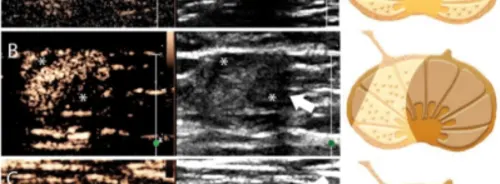Return visits to the emergency department (ED) pose a challenge to healthcare organisations, with significant financial and care implications. About 20% of patients return to the ED within 30 days, with some visits being preventable. Factors contributing to return visits include fear, anxiety, convenience, and expedited evaluation. While the correlation between return ED visits and quality of care is mixed, payers consider it a quality metric. Various interventions have been implemented to address this issue, including screening tools, predictive models, care transition programmes, compliance programmes, and patient education. Remote patient monitoring (RPM), traditionally used for chronic disease management or post-surgical care, was deployed during the COVID-19 pandemic with positive results. This study published in Studies in Health Technology and Informatics analyses the implementation of RPM for ED patients discharged home, examining subsequent healthcare utilisation and patient engagement with the RPM programme.
Implementation of RPM at M Health Fairview
The study was conducted within the M Health Fairview (MHF) health system, which comprises 10 hospitals across greater Minnesota and western Wisconsin, United States. They implemented a remote patient monitoring (RPM) technology solution called GetWell Loop for patients discharged from the emergency department (ED). This technology was integrated into the discharge process, with enrolment information included in the after-visit summary provided to patients. To participate, patients needed a mobile phone number or email address in their electronic health record (EHR). Certain patients were excluded from the study, including those already enrolled in speciality RPM programmes (such as COVID-19 discharge programmes) or other transition programmes. Additionally, patients who required interpreter services were excluded since the RPM programme was available only in English during the study period.
RPM Utilisation Following Emergency Department Discharges
The study tracked healthcare utilisation for 90 days following the index ED visit, including all office and telephone encounters, which were extracted from the EHR. Patients who met the inclusion criteria received an email or text message with instructions on how to activate the RPM programme. They were asked to verify their date of birth, create a login, and choose their preferred method (mobile phone or email) for receiving messages within five days of discharge. The RPM messages sent to patients included three types of content: check-in messages (confirmations or surveys), reminders, and a checklist to confirm medication pickup. Some of the check-in messages allowed patients to provide responses that could trigger alerts, prompting a phone call from a registered nurse within six hours. Patients were also encouraged to provide free-text comments about any worsening issues they experienced, which helped prepare nurses for interactions during phone calls and facilitated documentation in the EHR.
RPM participants less likely to return to the ED
Between October 19, 2020, and April 20, 2022, a total of 107,477 consecutive Emergency Department (ED) patients were offered a Remote Patient Monitoring (RPM) programme as part of their discharge process. Of these patients, 28,425 (26.1%) activated the RPM technology. Patients who activated the RPM tended to be slightly older compared to those who did not activate it. The activation rates varied across the ten hospitals with adult EDs, ranging from 21.9% to 29.4%.
Upon comparing patients who activated the RPM with those who did not, it was found that ED return rates within 90 days of the index visit were lower among activated patients (19.8% vs. 23.6%). Additionally, activated patients had a higher number of office and telephone encounters within the 90 days following their index ED visit compared to non-activated patients. Patients who activated the RPM had a longer mean survival return time to the ED compared to non-activated patients. Furthermore, patients who activated the RPM had a 16.2% lower hazard of returning to the ED within 12 months after their index visit. This suggests a potential benefit of RPM activation in reducing ED utilisation over time. The study evaluated the effectiveness of a tailored Remote Patient Monitoring (RPM) programme in reducing return visits to the Emergency Department (ED), with a focus on patient activation. RPM programmes utilise technology solutions and virtual clinical support to monitor patients remotely, potentially offering a digital health alternative to reduce ED costs and improve care delivery. The findings indicated that patients who actively engaged with the RPM programme were significantly less likely to return to the ED within 90 days of their initial visit. Specifically, there was a 16% lower hazard of returning to the ED in the 12 months following the index ED visit among patients who activated the RPM programme.
Future directions to improve RPM participation
However, the study identified several limitations. One major constraint was the relatively low activation rate of the RPM programme, with only 26.4% of eligible patients participating across different hospitals. Additionally, the analysis lacked data from other health systems, limiting the generalisability of the findings. Moreover, the absence of ED-specific clinical data, such as primary and secondary complaints, posed another limitation. Furthermore, the study excluded low-income patients on Medicaid, potentially impacting the representativeness of the sample. To address these limitations and provide further insights, the study suggested future research directions. These included exploring broader patient engagement strategies, understanding factors influencing RPM activation, and assessing its impact on ED utilisation. The study also proposed improved study designs, such as step-wedge implementation-effectiveness trials, to better understand causal relationships. Moreover, strategies to enhance RPM activation were recommended, such as providing training and support for front-line healthcare teams and integrating digital health literacy screening tools. Additionally, incorporating patient feedback on the specific RPM programme could help improve engagement and effectiveness. Lastly, the study highlighted the importance of assessing the cost-effectiveness of RPM solutions in the ED setting, indicating that further research in this area would be valuable for informing healthcare decision-making.
The assessment of a tailored Remote Patient Monitoring (RPM) programme aimed at decreasing return visits to the Emergency Department (ED) within an integrated healthcare system offers preliminary evidence supporting the efficacy of similar technology in an ED environment. Despite observing relatively low levels of patient engagement, those who actively participated in the programme exhibited reduced ED utilisation.
Source: Studies in Health Technology and Informatics
Image Credit: iStock






